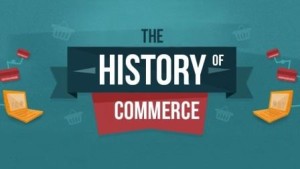Commerce has come a long way in the last 100 years or so. Imagine a world before shopping and money transfer existed as we know it today. In the beginning, commerce only existed to supply man with his absolute needs like shelter, food and clothing. As man advanced, he started to desire not only the basic needs, but the luxuries of life that required a little more in exchange. While some provinces are lucky enough to have much of what they could ever want right within their borders, other countries are not as fortunate.
As man advanced, he started to desire not only the basic needs, but the luxuries of life that required a little more in exchange. While some provinces are lucky enough to have much of what they could ever want right within their borders, other countries are not as fortunate.
Some places may lack wood or silk for making clothing, while others have a plethora of resources such as coal or precious metals. A need for trade and exchange developed as soon as people realized they had a need or desire for what it is they didn’t have.
The Barter System
Bartering is a system by which goods and services are exchanged for one another without the presence of any form of money. The Barter System can be traced all the way back to Ancient Mesopotamia around 6000 BC.
The Phoenicians quickly adopted the system for their own and began trading goods with other countries throughout the empire. Bartering became popular again during the 1930’s during the Great Depression when money was scarce and there was still a need to obtain certain items for survival.
It is still used today in various forms as it is all up to the individual on if they want to use the system or not. The presence of online or digital marketing has made it possible to use the barter system on a large scale, even in today’s money driven world.
The Development of Money
Money is important because it allows for the individual to gain a product or service indirectly. Money also creates a level playing field. Everyone will accept money at it’s face value, even though is is essentially a worthless piece of metal or paper.
The first official currency came out of Lydia in 600 BC. They were coins made out of silver and gold and stamped with images that differentiated the value of each currency. In 1,200 AD, paper currency developed in China. Europe still used coins until 1,600 AD but made eventually made the switch as paper was much easier to carry around.
The Emergence of Digital Money
Now days, it is rare that anyone even carries around cash. The online world has exploded and most everything short of cash transactions are done online through the use of digital money.
Debit cards and credit cards are the present and future of the world as we know it. The transfer to online banking and money management has already been in full swing for years, and the trend will continue in that direction. Why carry around money when you can have it at the swipe of a card or the click of a button?
